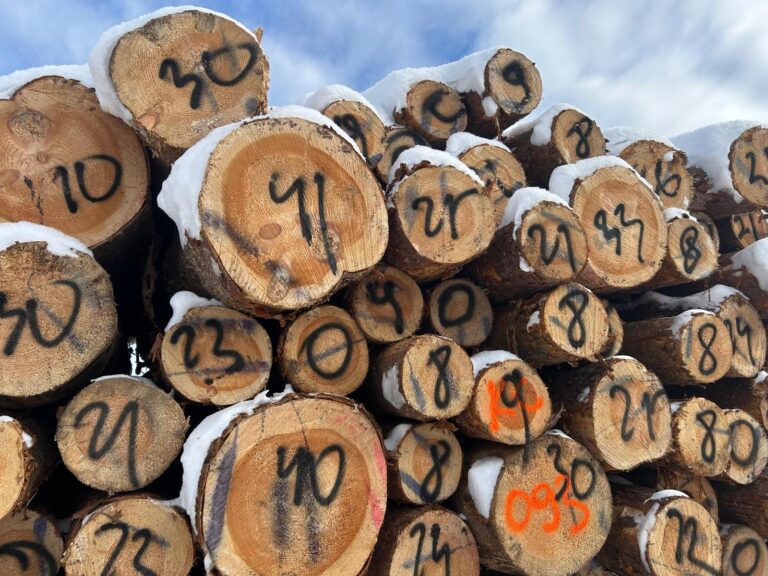Softwood prices are rising globally, but frame boards are being replaced in warehouses by firewood and fence posts (TTJ)
At the beginning of March, softwood traders are still experiencing market uncertainty, with demand having only slightly increased in the last two months, falling short of most traders' expectations, as reported by TTJ .
A slight increase is characteristic of specific products, not all coniferous groups.
As a staple product in importers' and traders' timber yards, graded frame boards have occupied a large space in warehouses for many years. They are needed in construction in various lengths and sizes. This segment has attracted large investments, but for some time it has retained the status of a low-profit product, as it is highly dependent on the impact of market volatility, experiencing both large ups and downs - both in terms of demand and prices, which causes companies to suffer.
In the current environment, lenders in the timber trade sector are cautious. Over the past year, several established businesses have either lost (and are still losing) money or have experienced failure, which has eroded the trust of lenders to the point where insured limits have been lifted altogether.
The shortage of raw materials and the increase in sawn log prices are “cutting in.” Without demand growing, prices are rising, recovering slightly from the lows of late last year. Producers report that increases will likely have to be expected every month.
Last fall, many Baltic coke processors believed that the market was not functioning because the increase in the cost of sawlogs significantly exceeded the level of return they could expect from buyers.
Many producers abandoned the production of construction timber, preferring fuelwood, pallet wood or agricultural fencing. Even today, it is still visible in many ports that, for example, the trade of Latvian C24 and lat material has been replaced by rounded poles and general landscaping products.
A similar situation has now developed in Sweden in terms of raw material costs and supply. In order to balance supply and demand, factories in the south have stopped production for various periods, rather than simply reducing shifts as was done in the past. The Swedes have made these decisions to avoid losses, but in their attempt to control output, they have helped to increase prices in the supply chain.
March is the first month to see a significant price increase since last summer, but traders are again expressing concerns that prices could reverse course, so it is important for the industry that suppliers at least try to ensure a stable level.
The UK's softwood imports increased by around £86,000m3 (+1.5%)* last year, according to Timber Development UK (TDUK), and their value changed in parallel, indicating that the average price index was unchanged compared to 2023. The figures noted that Swedish exports to the UK had decreased, while Latvian exports had increased.
UK softwood imports: TDUK statistics in cubic metres:
Year 20245,808,0001.50%20235,722,0000.79%20225,677,000-25.09%20217,578,00015.17%20206,580,0002.91%
The top importer of British softwood at the end of the year was Sweden with 47% (2,729,000 million3), while Latvia came in second with 17%, followed by Finland with 12%, Germany and Ireland with 8% each.
Looking at the quality changes, it can be seen that the average diameter of logs imported from the Nordic/Scandinavian countries has gradually decreased. This has resulted in a greater amount of center-cut material, reducing the amount of side cut in both ungraded and fifth grade.
Looking ahead, demand for modular floors and engineered wood structural beams is increasing, while solid wood beam structures are being specified less, especially for new housing projects.
The housing market is a hot topic not only in the timber trade but also in the national media, where the consensus among housebuilders is that the current direction of planning reform appears to be aimed solely at the largest developers.
Construction is a hot topic in the UK, where there are around 2,500 registered small and medium-sized builders, who can build 10 to 20 houses on a site. But they say it takes more time and energy to get projects approved and approved than ever before. These builders are likely to use solid timber beams rather than kits of houses designed in I-joists and LVL formats, and are therefore an important outlet for the solid timber beam market.
Prepared by Stephen Pony , TTJ, March 14, 2025
Photo: abctimber.com
